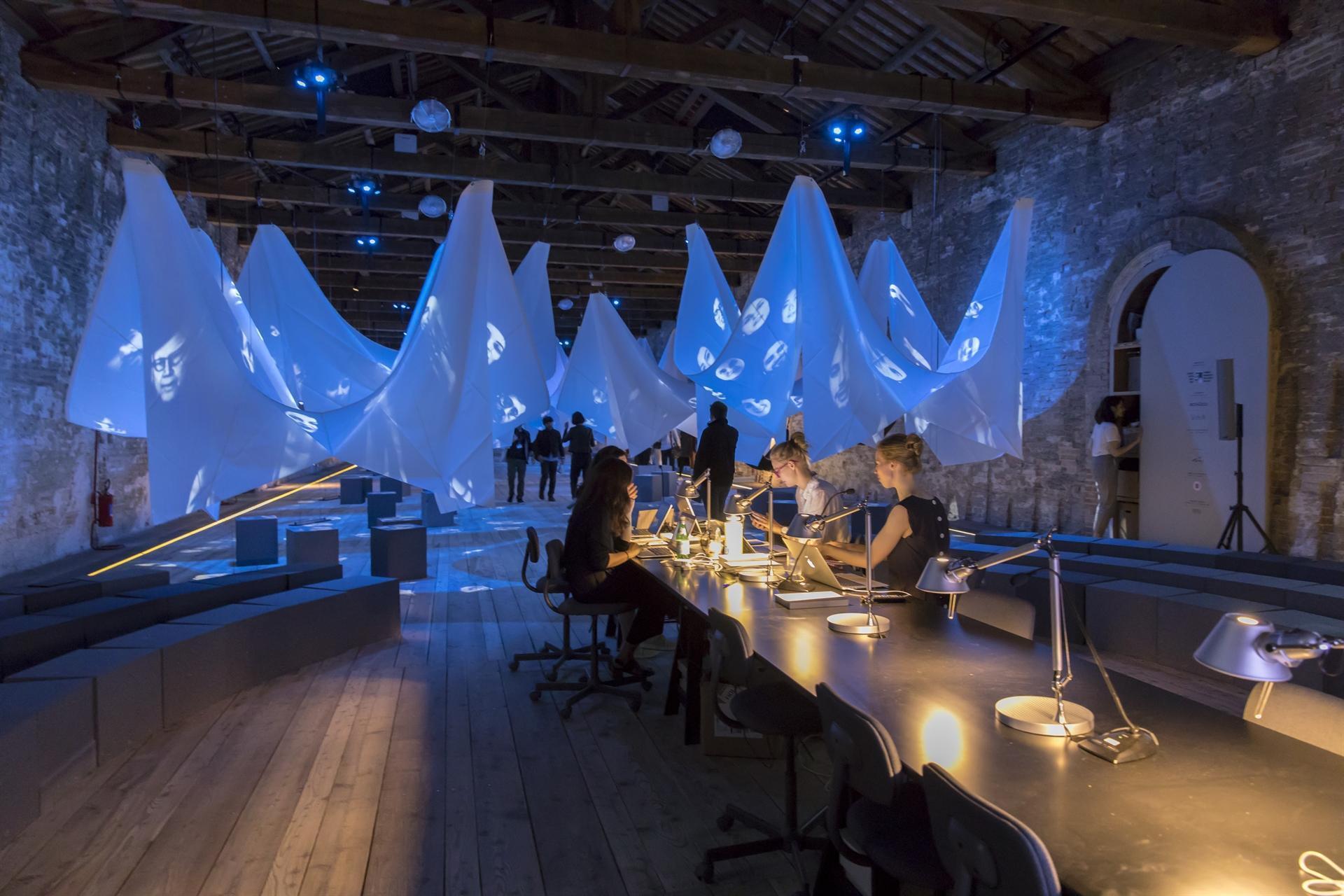
In an era when many countries are putting up border walls and barbed wire fences, the 16th Venice Biennale of Architecture, taking place from May 26 to Nov. 25, aims to showcase a “sense of humanity” through its displays, organizers said ahead of its opening on May 26.
The world’s most prestigious architecture festival, which is part of the Venice Biennale, has chosen the title “Freespace” for its 16th edition in the picturesque Italian city.
“The architect’s creativity must be at the service of the community,” Irish architect Shelley McNamara, who curated the vast exhibition with colleague Yvonne Farrell, told AFP.
McNamara said “Freespace” aims to highlight collective spaces, “generosity of spirit” and the “sense of humanity” that architecture must place at the heart of its agenda.
Sixty-five different countries and one hundred architecture studios have been invited to display their interpretation of the theme in the vast 3,000-square-meter Venetian Arsenal and gardens.
Turkey’s pavilion
Curated by Kerem Piker, the Turkish pavilion is presenting Vardiya (The Shift) at the event.
Vardiya is a program of public events that will transform the pavilion of Turkey into a staging ground for creative encounter, collaborative production and cultural exchange across borders.
Some 122 international architecture students from 16 countries will visit the Turkish pavilion in weekly shifts as active producers of the evolving exhibition content. They will participate in workshops, engage in roundtable discussions and hear keynote lectures driven by guest scholars, designers and architects.
The project started with an open call to architecture students around the world, generating 452 responses to the question: “Why does the biennial exist? What does the biennial do? For whom does the biennial exist?”
The program will begin with multi-media installations, through which visitors will be informed about forthcoming activities and workshop themes. Throughout the 25 weeks of the event, the pavilion of Turkey will host 13 workshops, focusing on a variety of topics; around 50 digital meetings with participants from a range of disciplines; and six lectures by keynote speakers, including an international roster of leading architects. All of the workshops, digital meetings and lectures will be open to visitors during biennale opening hours.
“Architecture is a field that is constantly expanding, transforming and renewing itself. As such, there is a need for environments where architectural knowledge is reproduced, shared and discussed, and the voices of new participants are heard,” Piker said.
“As the International Architecture Exhibition of La Biennale di Venezia is one of the most important informal learning arenas in architecture, we prefer to describe the Pavilion of Turkey as a space for meeting, encounter and production rather than merely an exhibition space... We see this project and the preparation process as an opportunity to rethink what a biennale does, for whom, and why it exists in our time,” he added.
Seven newcomer countries
The exhibition sees seven countries, including Antigua and Barbuda, Saudi Arabia, Guatemala, Lebanon, Mongolia, Pakistan and the Vatican, participate for the first time.
The Vatican pavilion displays 10 chapels, each one designed by a renowned architect, including the Brit Norman Foster and the Portuguese Eduardo Souto de Moura, both Pritzker prize winners.
Many participants have used the term “Freespace” to reflect on hot political topics such as migration and isolationist policies.
The British pavilion named “Island” hosts a huge rooftop platform which looks out over the lagoon.
The idea is to reflect on “tomorrow, yesterday, isolation and even our political situation,” architecture firm Caruso St John explained in a description, alluding to the U.K.’s planned departure from the European Union.
Meanwhile, the German pavilion chose to focus on the theme of “Unbuilding Walls.”